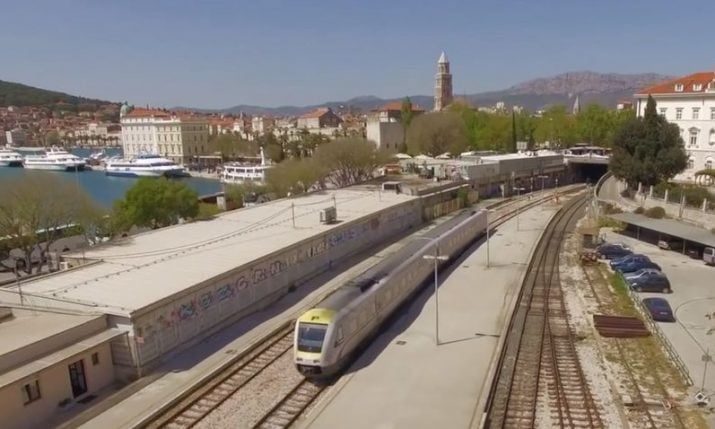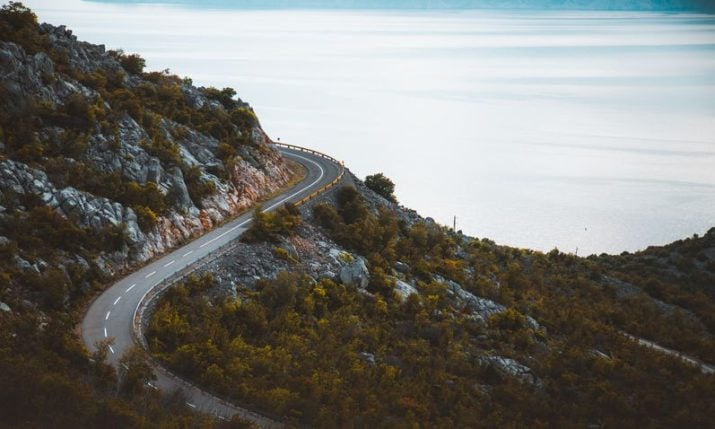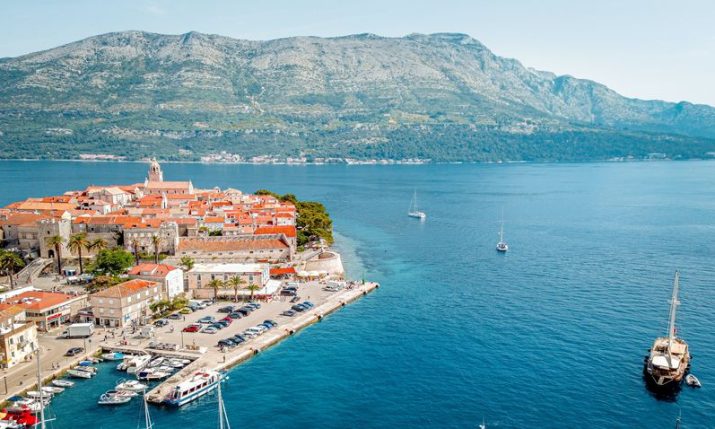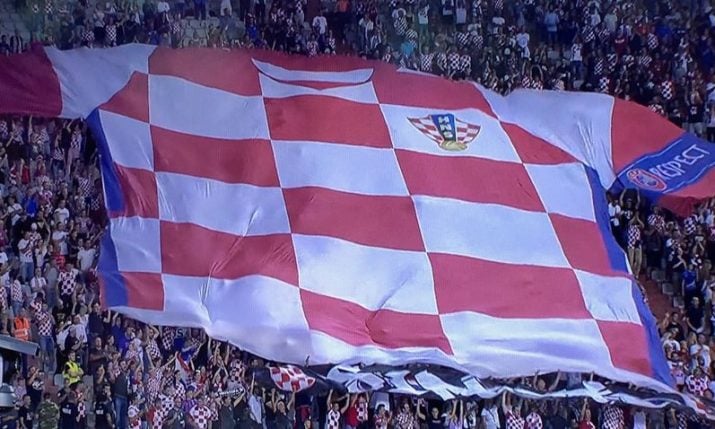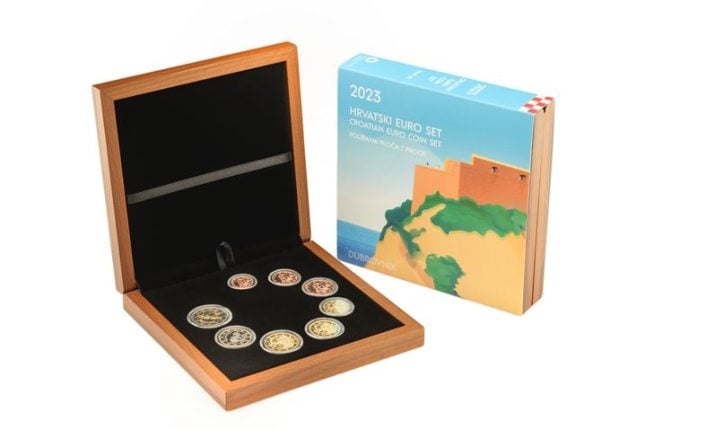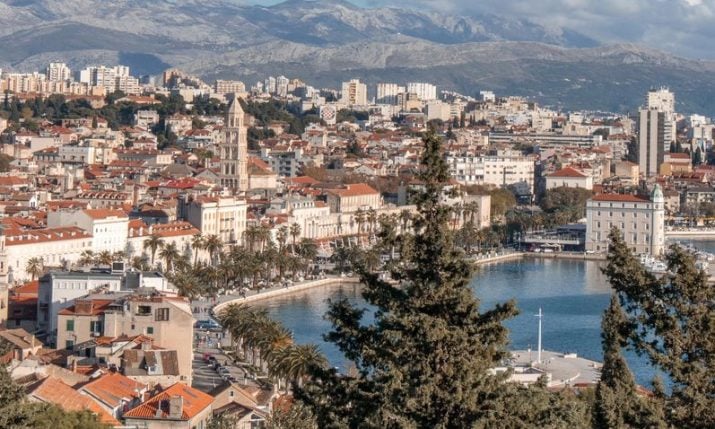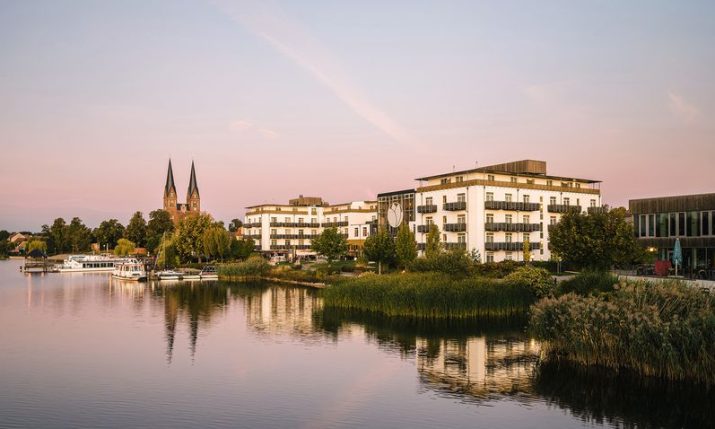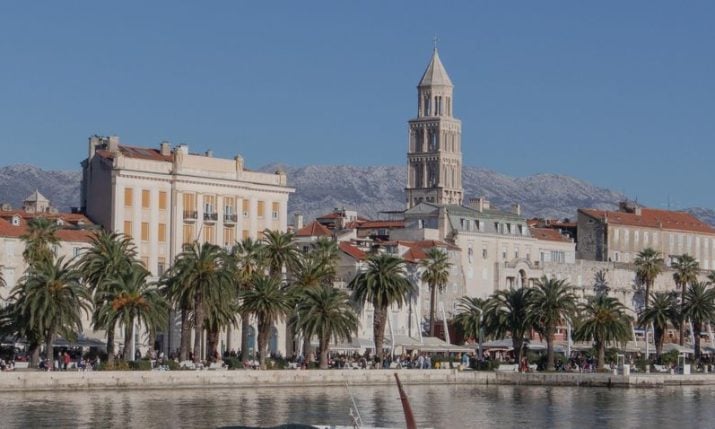Timetrekkers Travels to Salona
- by croatiaweek
- in Latest
Highlights of an ancient Roman city
By Patrick Skinner
The ancient Roman city of Salona is located about 6km northeast of the old town of Split (Dalmatia, Croatia). It overlooks the east Adriatic coastline close to the delta of the River Salon (or Jadro as it’s know today). The city began its life in the 3rd century BC when the Issean Greeks established a market town here. After supporting Caesar’s rise against Pompey in 48 BC, Salona was raised to the status of a Roman colony. But by the 7th century AD, following incursions by neighbouring Avars and Slavs, Roman life had largely vanished.
My trip to Salona began on a sunny June Saturday morning. I met with my guide (Vjeren) in the reception of my hotel near the centre of Split, and took the short drive northeast up to Salona. Upon entering the complex, the first signs of Roman occupation to meet your eyes are the impressive remains of the ruins of the basilica and cemetery of Manastirine (featured picture above) . Vjeren explained to me that, although these ruins are actually located outside the main city walls, they’re probably the most important part of Early Christian Salona. Archaeology indicates that this part of the city dates back to the 2nd century BC, and was a Roman pagan necropolis in the 1st century AD. Its significance for Christians began when Salonitan bishop and martyr Domnio was interred here following his execution close to the Salona’s amphitheatre in 304 AD. In the middle of the 4th century AD, a memorial chapel was built over Domnio’s tomb. Subsequently, other Salonitan bishops were buried here, and the sarcophagi of other important local Christians were placed in smaller memorial chapels around the main chapel. In the adjacent Christian cemetery the dead were interred in amphorae, wooden coffins, lead coffins, vaulted tombs, and sarcophagi, and in some cases simply covered with roof tile. Some extraordinary carved marble sarcophagi have been discovered here. One dates to the 4th century AD and shows scenes from the mythical story of Hippolytus and Phaedra.

4th century AD carved marble sarcophagus showing scenes from the mythical story of Hippolytus and Phaedra
Moving on, we walked about 30m southeast to a building known as Tsuculum. Tusculum was not part of Salona originally, but built in 1898 by 19th century Croatian archaeologist Frane Bulič. Bulič, who was curator at the Archaeological Museum in Split, had this building constructed to undertake his research of the Roman city. Interestingly, he named the house after a popular holiday resort used by the Roman aristocracy. The façade of the building is made up of a curious collection of stone inscriptions, capitals, and columns recovered from the ruins of Salona, and parts of a medieval Romanesque bell tower from Split Cathedral. Inside, to the left, is the Drawing Room. Here, in the centre of the room, is a stone table supported by stone columns, surrounded by hand-made wooden chairs. The décor is reminiscent of Pompeian-style Early Christian drawings with images on the ceiling of the Good Shepherd surrounded by animals such as doves, peacocks, fish, and dolphins. On the walls, writings from the Roman poet Horatius idealising rural life can be found.
Still officially outside the city of the Salona, we headed directly south from Tusculum for about 100m. Here we met the city walls running perpendicular. We had actually walked directly to the top of the walls. The sediment on the north side of the walls has built up to such an extent that the ground is level with the surface of the walls. The walls only became apparent when we could see the vertical drop on the other side.
Measuring about 4080m in length and creating an elliptical perimeter around the city, these were not in fact Salona’s original walls. The city was fortified in two main stages. The original part of the city (now the western half) was fortified in the 2nd century BC. The remaining walls were built to accommodate the city’s expansion following a period of extended peace in the 1st century AD. Much of the stone used during this construction was taken from existing structures such as parts of the aqueduct and amphitheatre.
Looking south and effectively standing on top of the city walls, our viewpoint gave us an excellent panoramic of city, and the Episcopal centre of Salona. The Episcopal centre is located in the northwest region of the city’s eastern extension. Vjeren explained to me that the most important structures here are the twin basilicas. These are two monumental churches measuring about 40m x 20m joined by a covered atrium. The church nearest to where we were standing (the northern basilica) was originally dedicated to Christ and later to the Holy Virgin, and was used as a congregational church. This building was also known as the Salonitan Cathedral and is the largest known example in the region of Dalmatia. It had three naves partitioned by stone columns, and the sanctuary was separated from the congregation area by a marble-column supported alter. The interior floors were decorated with geometric shaped mosaics of many different colours, the walls filled with elaborate frescos, and the walls of the apse were covered in marble. The southern basilica, on the other hand, was much less elaborate, and more of a memorial church dedicated to local patron saints.
Also visible from our current vantage point was Porta caesarea, the main entrance to the old city. Built under the reign of Emperor Augustus, it consisted of two octagonal towers on either side of the gateway, and three entrances – one for vehicles and two either side for pedestrians. Linear indentations on the stone slabs made by vehicles travelling into and out of the old city can still be seen today. As the city expanded, however, the old city gate became obsolete in its function to demarcate the perimeter of the town.
It was, however, revitalised to some extent during the reign of Constantius in the 4th century when it was partially re-built. During this reconstruction, a stone relief measuring about 100cm wide and 57cm high was placed above the entrance. Now located in the Archaeological Museum in Split, it shows a woman wearing a crown with a flag with the initials of the towns name ‘MIVSF’ (MARTIA IVLIA VALERIA SALONA FELIX) in her right hand, and a modius (a measuring container for grain – symbol for well-being) in her left.
Just as we were about to continue on, Vjeren pointed out the Praetorium or governor’s palace, located just southeast of the Porta caesarea. According to Vjeren , this was a luxury villa with its floors covered with exquisitely designed and crafted mosaics showing mythological figures such as Apollo, Orpheus, and the sea god Triton rising from the sea with crabs and octopi. These mosaics, like many of the archaeological pieces recovered from Salona, clearly show the wealth and status of this city.
We headed west, effectively walking along the top of the city walls towards the amphitheatre. En route, we encountered a bewildering site of 16 sarcophagi, known collectively as ‘the cemetery of 16 sarcophagi’. Discovered in 1871, they were found arranged in a straight line and contained the bodies of both pagans and Christians. Nobody knows for certain why these people were buried in this way and why pagans and Christians were laid together like this.
As we continued west we reached the eastern side of Salona’s amphitheatre. Built at the end of the 2nd century AD, the structure measures about 125m x 100m. Its auditorium could hold about 17000 people when full to capacity, and was divided into three tiers; two lower ones for seating viewers and a third for standing. Important individuals such as the Provincial governor and city magistrates had their own private boxes; the Provincial governor on the south side and the city magistrates on the north.
As Vjeren headed back to the entrance of the complex to fetch the car, I made my way to the centre of the area. Here the entertained crowd would have seen dead and wounded gladiators being taken away via a hatch that led to an underground corridor. During the reign of Emperor Diocletian in the 4th century, many Christians also came to their deaths here. As I stood in the middle of this 2000 year-old arena, I thought to myself that it is perhaps fitting then that the places so polarised in the lives of Salonitan Christians (the amphitheatre and the basilica and cemetery of Manastirine) are located at opposite ends of this fascinating ancient complex.
If you are looking for a guided archaeological tour of your own in Croatia then specialists Timetrekkers have recently launched their 2014 tour entitled “In Search of Archaeological Treasures”. The trip will start in Zagreb and end in Dubrovnik from the September 7th to 18th and will take in three UNESCO World Heritage sites, Croatia’s breathtakingly beautiful scenery and Salona. Timetrekkers, which has a team of Croatian experts, will take visitors to explore the countries forgotten prehistoric graveyards, Roman palaces and temples, ancient cities, and hidden medieval ruins amongst other things. To find out more or book then visit their website here.







